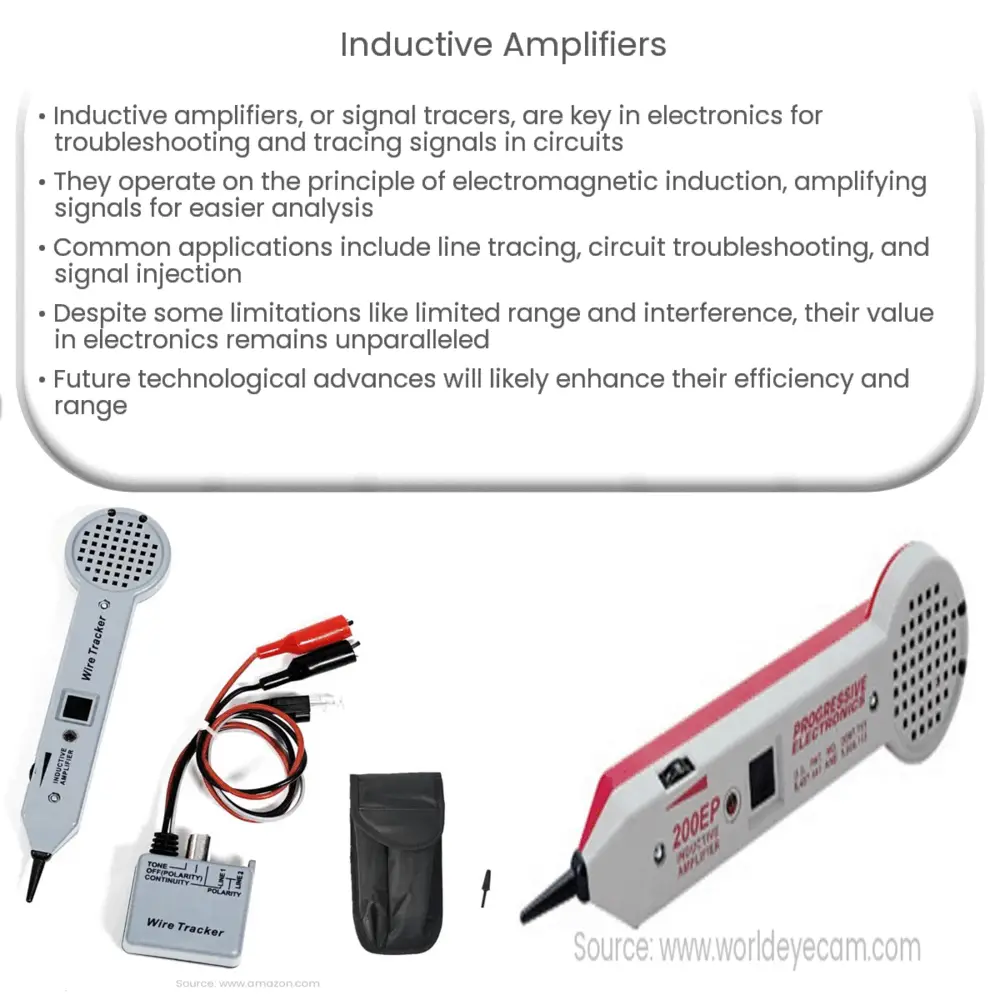Explore the workings, applications, advantages, and future of inductive amplifiers, essential tools in electronics troubleshooting.

Introduction to Inductive Amplifiers
Inductive amplifiers, also commonly known as signal tracers, are invaluable tools in the field of electronics. Their primary function is to troubleshoot and trace the signal flow in electrical systems and circuits, helping engineers detect and resolve issues.
Working Principle
The fundamental concept behind an inductive amplifier is the principle of electromagnetic induction. This process involves generating an electromotive force (or voltage) across an electrical conductor in a changing magnetic field. Inductive amplifiers utilize this principle to amplify signals, making them easier to track and analyze.
Applications of Inductive Amplifiers
- Line tracing: One of the common applications of inductive amplifiers is in line tracing. They can trace metal conductors, such as those in wires or cables, even when hidden or embedded in walls, ceilings, or floors.
- Troubleshooting circuits: Inductive amplifiers can also assist in the troubleshooting of electronic and electrical circuits by helping detect interruptions or signal losses.
- Signal injection: They are used for signal injection techniques where a signal is introduced into a circuit to test or troubleshoot the circuit.
Components and Operation
At its core, an inductive amplifier consists of a probe, amplifier, and speaker.
- The probe is a sensitive inductor that picks up electromagnetic fields from the conductors being tested.
- The amplifier boosts the signal received by the probe to a level that can be easily evaluated.
- The speaker converts the amplified signal into sound, allowing the technician to assess the signal’s presence and quality.
The operation of an inductive amplifier is relatively straightforward. It starts with the probe detecting a signal from a wire or circuit. The amplifier then amplifies this weak signal, and finally, the speaker translates the signal into a sound. The tone or pitch of this sound indicates the strength and quality of the signal in the circuit.
Advantages of Inductive Amplifiers
Inductive amplifiers offer a number of advantages in various fields of applications:
- Safety: One of the most significant benefits of inductive amplifiers is that they provide a non-invasive means of signal detection, reducing the risk of damage to the circuit or personal injury.
- Versatility: These devices are versatile, capable of working on a wide range of circuits and frequencies.
- Portability: Due to their compact size, inductive amplifiers are highly portable, making them particularly useful in field applications.
Disadvantages of Inductive Amplifiers
Despite their numerous advantages, inductive amplifiers also have some limitations:
- Limited range: The range of detection is limited, often requiring the probe to be in close proximity to the signal source.
- Interference: They are susceptible to interference from adjacent circuits or wires, which can sometimes complicate signal analysis.
Future of Inductive Amplifiers
While inductive amplifiers have been around for quite some time, advances in technology are expected to increase their efficiency and range, making them even more invaluable tools in electronics. The rise of IoT and smart home technologies creates additional opportunities for the use of inductive amplifiers, as the need for effective troubleshooting tools grows with the complexity of these systems.
Conclusion
In conclusion, inductive amplifiers are essential tools in electronics, offering non-invasive, versatile, and portable means of signal detection and analysis. Despite some limitations, their utility and practicality remain unchallenged, making them indispensable for troubleshooting electronic and electrical circuits. As technology evolves, it is expected that these tools will continue to adapt, becoming ever more effective in their role.

